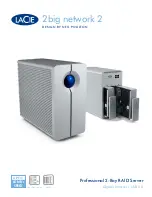
SYNCHRONIZATION 16
4. SYNCHRONIZATION
WATCHPAX 60 offers three kinds of synchronization:
• Standard, WATCHOUT network-based synchroniztion. This will keep all media servers in the
WATCHOUT cluster synchronized. The sync signal comes from either the production computer or
the WATCHPAX 60 acting as the cluster master.
• External timecode. The WATCHOUT system can be slaved to an external linear timecode source
(LTC). The LTC signal can be fed to the production computer or to the display cluster master,
• Hardware-locked synchronization between display clusters. This can be achieved in two ways:
using the built-in synchronization card,
(see “GPU Synchronization – Models B, C”)
external sync connected to the sync input on the SDI card,
(see “SDI Synchronization – Model C
To configure and setup synchronization, access each media server locally. Do this either by a
Remote
Access
(from the WATCHOUT production computer) or connect a USB keyboard/mouse and screen to
your WATCHPAX 60.
Connecting by Remote Access will automatically bring up the WATCHOUT Display window
(WATCHPOINT). If you are using a local keyboard/mouse and screen, enter Ctrl-W to bring up this
window.
You’ll find more on this in the “Dataton WATCHOUT User’s Guide” in the section on “Display Devices”
(Chapter 2: Installation) and “Remote Access” (Chapter 4: Commands).
EXTERNAL TIMECODE
For this to work, timecode must be enabled in the startup script. Read how to do this in the section on
“List of Commands/timecodeMode” (Appendix C: Control Protocol) in the “Dataton WATCHOUT
User’s Guide.”
Open the WATCHOUT Display menu (WATCHPOINT, Ctrl-W) and select the interface you want to use
under “Timecode”.
Connect your external timecode source to the Audio input XLR break-out cable left 1.
Содержание WATCHPAX 60
Страница 1: ...1 3 WATCHPAX 60 USER S GUIDE ...
















































